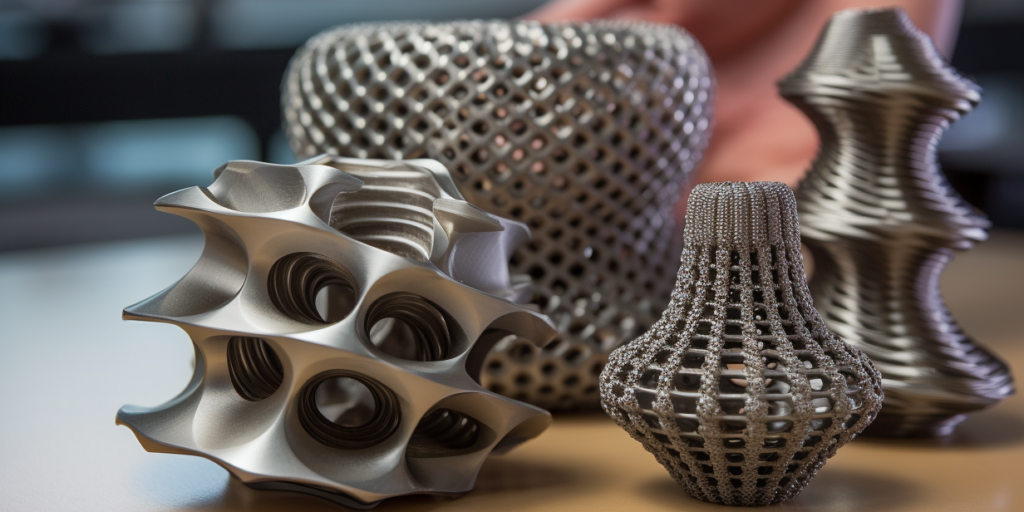In a previous article (for more details, click here), we analyzed the physical properties, chemical properties, and manufacturing applications of metalloids.
This article will focus on their origins, who discovered them, and where they got their names.
We also prepared a related video(click here).
The Range of Metalloids
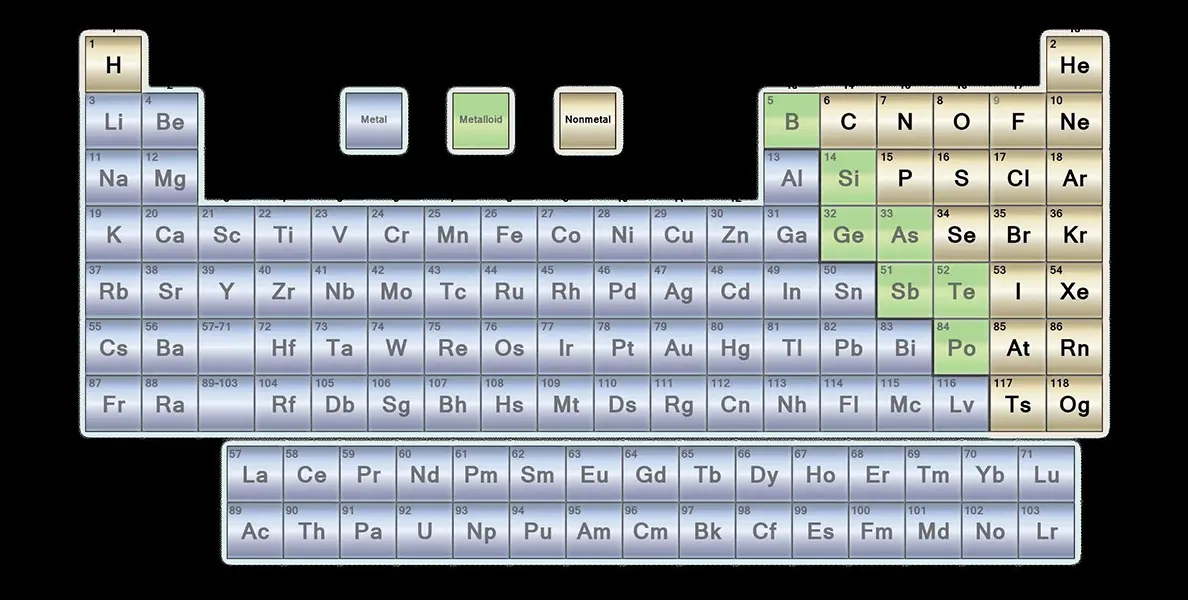
Let’s see what are elements classified as metalloids.
The Definition and Properties of Metalloids
Metalloids are elements that display properties that are intermediate between those of metals and nonmetals. They exhibit a unique combination of characteristics, such as:
- Properties: They exhibit properties intermediate between metals and nonmetals. All metalloids are solid, with a metallic luster.
- Medium Conductors: They have good electrical conductivity, albeit not as efficiently compared to metals.
- Semiconducting property: They are vital for electronics, particularly in the manufacture of semiconductors used in computer chips and solar cells.
- Positions in the periodic table: These elements in the periodic table are located along the zigzag line that separates metals from nonmetals.
- Compatibility: They can combine with other elements, like form alloys with metals, enhancing their strength and resistance to corrosion.
What Chemical Elements are Considered Metalloids?
The range of metalloids typically includes six elements:
- Boron
- Silicon
- Germanium
- arsenic
- antimony
- Tellurium
However, things are not really that simple. Currently, the scientific community lacks a clear and universal definition of the term ‘metalloid’, leading various scientists to classify different elements as either metalloids, metals, or non-metals.
The six elements mentioned above are only the most common divisions. These two elements are sometimes classified as metalloids, though they are less commonly discussed in this context:
- Polonium
- Astatine
History of Metalloid Elements on the Periodic Table
In this part, I summarized the histories of these groups of elements.
| Elements | Discoverer | Origin of Name |
| Boron |
Humphry Davy Joseph-Louis Gay-Lussac Louis Jacques Thénard |
‘Flux’ in Arabic word |
| Silicon | Jöns Jacob Berzelius | ‘Flint’ in Latin word |
| Germanium | Clemens Winkler | His home country, Germany |
| Arsenic | Albertus Magnus | ‘Golden’ in Persian word |
| Antimony | Bauern | Many possibilities |
| Tellurium | Martin Heinrich Klaproth | ‘Earth’ in Latin word |
| Polonium | Marie Curie and Pierre Curie | Madame Curie’s home country, Poland |
| Astatine |
Dale R. Corson Kenneth Ross MacKenzie Emilio G. Segrè |
‘Unstable’ in ancient Greek word |
Boron(B, Atomic Number 5)
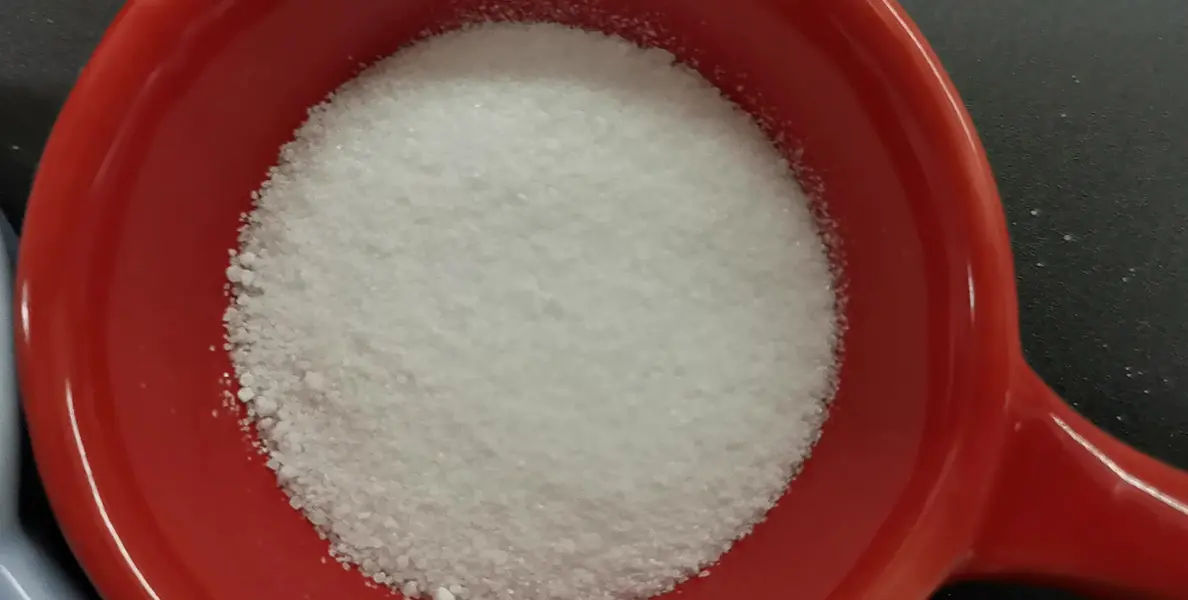
The name ‘Boron’ comes from the Arabic word ‘Flux’. In ancient times, boron was used as borax, a naturally occurring mineral.
Even before modern chemistry fully understood its potential, people used borax for its cleaning properties and in glass and ceramics, showcasing its utility.
In 1808, British chemist Humphry Davy, French chemists Joseph-Louis Gay-Lussac, and Louis Jacques Thénard separately discovered boron as a distinct element. They were able to isolate this element by combining boric acid and potassium.
Silicon(Si, Atomic Number 14)
![]()
The earliest human application of silicon dates back to around 3000 BC, when ancient civilizations used it in the form of silica to make pottery and glass.
Thomas Thomson, a Scottish chemist, is the namesake. In 1831, he named it the Latin word for ‘flint’.
However, in 1824, Swedish chemist Jöns Jacob Berzelius made the discovery. Berzelius was the first to isolate silicon in its pure form, leading to a deeper understanding of its properties and potential applications.
Arsenic(As, Atomic Number 33)

Arsenic was used in various alloys, as a pigment in cosmetics (one theory of this etymology is the Persian word for ‘golden’), and other materials back in ancient times.
Early on, scientists recognized its toxic properties. From Ireland to the Khitan, ancients considered arsenic the most potent poison (it also serves as a highly effective herbicide and pesticide).
The 13th-century alchemist Albertus Magnus first isolated it in a more recognizable form. His work laid the foundation for understanding this element, which would have significant implications in various fields, including medicine, agriculture, and industry.
Antimony(Sb, Atomic Number 51)
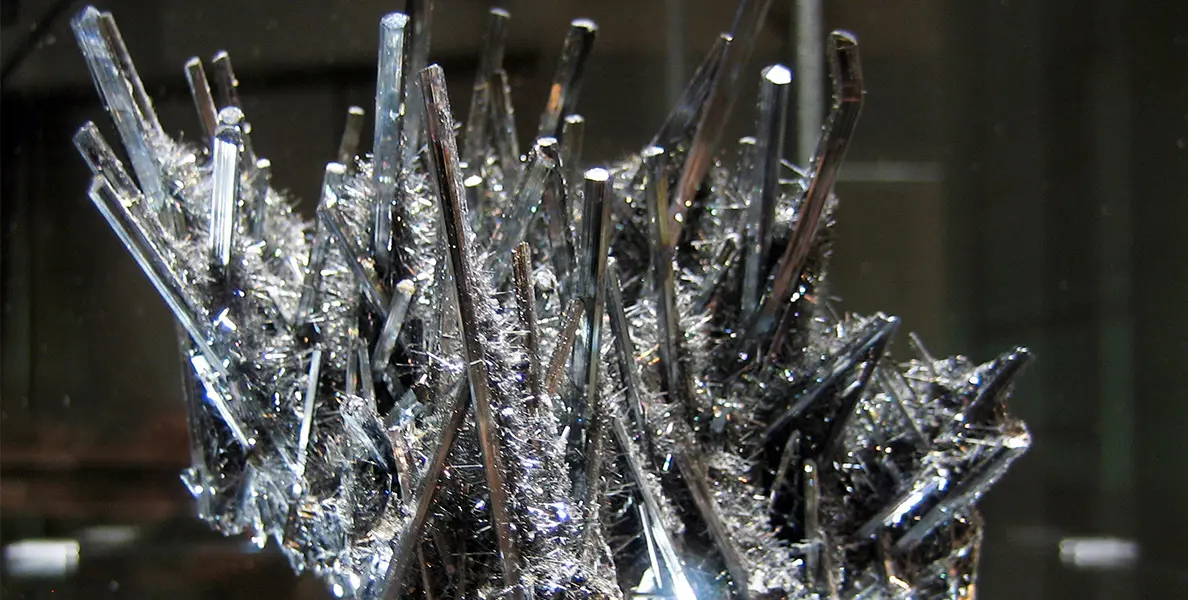
Ancient Egyptians used antimony as a cosmetic in the form of kohl, a dark powder, to enhance beauty and protect against the sun’s glare.
In medieval Europe, antimony was also considered a laxative (but be warned, this is very harmful!).
The etymology of the name is highly varied, including the ancient Greek ‘against solitude’, ‘not alone’, and the ancient French ‘monk-killer’.
Around the 4th century AD, the ancient Greek philosopher and alchemist Zosimos of Panopolis discovered antimony as a distinct element and documented its properties.
In 1615, Andreas Libavius, a German chemist, obtained antimony metal by adding iron to a molten mixture of antimony sulfide, salt, and potassium tartrate.
In 1777, Bauern, a German mining official, discovered and reduced natural antimony in siebenbürgen.
Later, in 1783, the Swedish scientist Anton von Swab made the first discovery of naturally occurring pure antimony in the earth’s crust.
Germanium(Ge, Atomic Number 32)
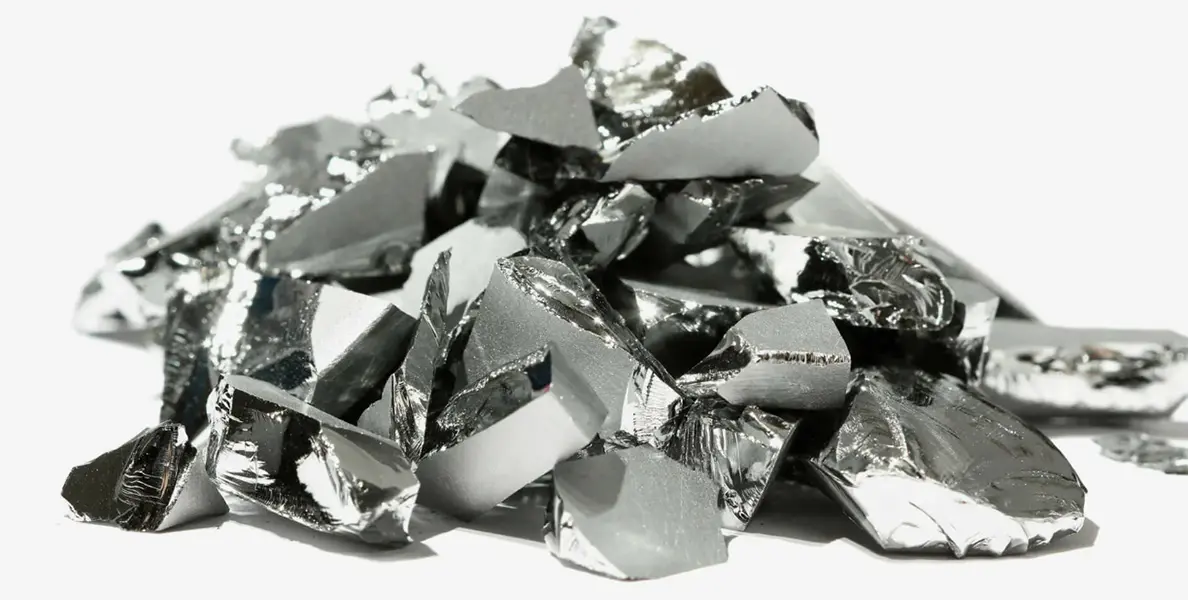
German chemist Clemens Winkler first discovered germanium in 1886. Winkler identified this element while analyzing a mineral called argyrodite, which contained both silver and germanium.
He named it his homeland German (probably not the Second German Reich as we know it, but the older, more abstract concept of ‘Germania’).
One of the earliest human applications of germanium was in electronics, particularly during the mid-20th century.
The production of transistors, which allowed for the miniaturization of circuits and the development of modern computing, revolutionized the electronics industry.
Tellurium(Te, Atomic Number 52)

The Hungarian chemist Martin Heinrich Klaproth first discovered tellurium(The word comes from the Latin for ‘earth’) in 1798 (though the Austrian mineralogist Reichenstein had already discovered tellurium-bearing minerals in 1782), isolating it from a sample of gold ore.
This unique metalloid has since found various applications in modern technology. We can trace the earliest human application of tellurium to its use in alloy production, specifically to enhance the properties of copper.
This early utilization demonstrated its importance in metallurgy, providing better strength and resistance to corrosion in metal mixtures.
Polonium(Po, Atomic Number 84)

Polonium is a rare and highly radioactive element discovered by the renowned physicist Marie Curie and her husband Pierre Curie in 1898.
They isolated this element while researching radioactivity, a pioneering field. The element bears the name of Marie Curie’s birthplace, Poland, despite Poland’s lack of sovereignty during this period(A sad story).
The earliest human use occurred in nuclear research and development. Its intense radioactivity made it a valuable tool in various scientific experiments and applications.
Notably, the early stages of atomic energy exploration utilized it, particularly in the development of nuclear weapons during World War II.
However, because of its extreme toxicity and radioactivity, its uses have become limited and highly regulated.
Astatine(At, Atomic Number 85)
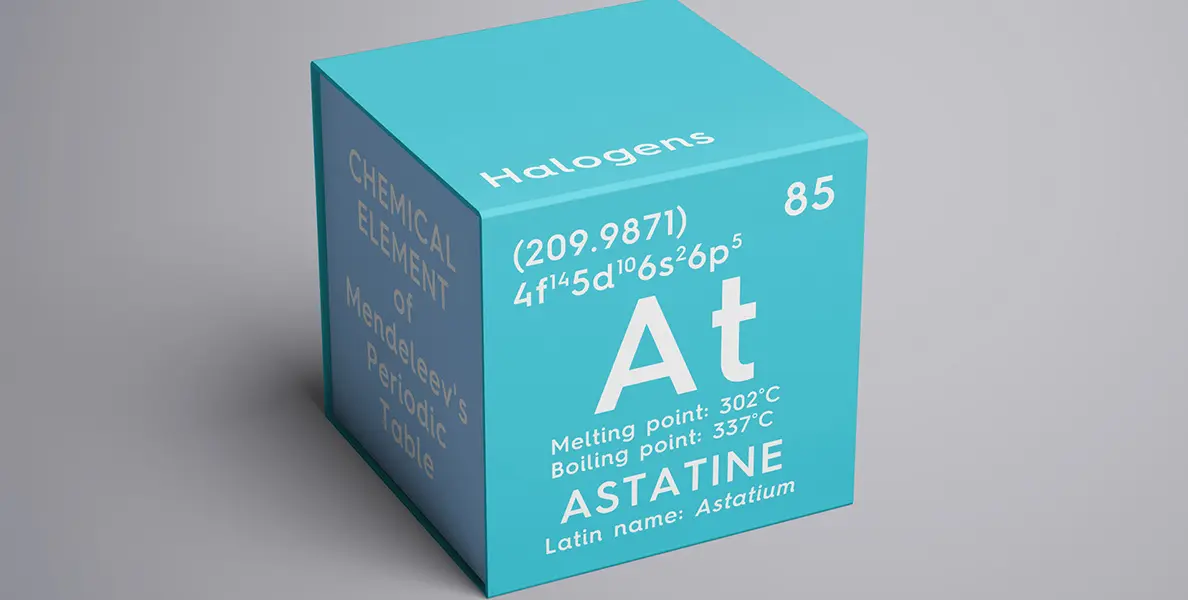
The discovery was made in 1940 by a team of Dale R. Corson, Kenneth Ross MacKenzie, and Emilio G. Segrè at the University of California, Berkeley.
Astatine has an unusually short half-life and is very unstable, so it was named after the ancient Greek word for ‘unstable’. The periodic table’s halogen group’s rare element is one of the least studied.
Medical science has applied astatine, particularly in radiation therapy. Targeted alpha-particle therapy, which aims to treat certain types of cancer by directly delivering radiation to tumor cells, has explored Astatine-211 for its radioactive properties.
Conclusion
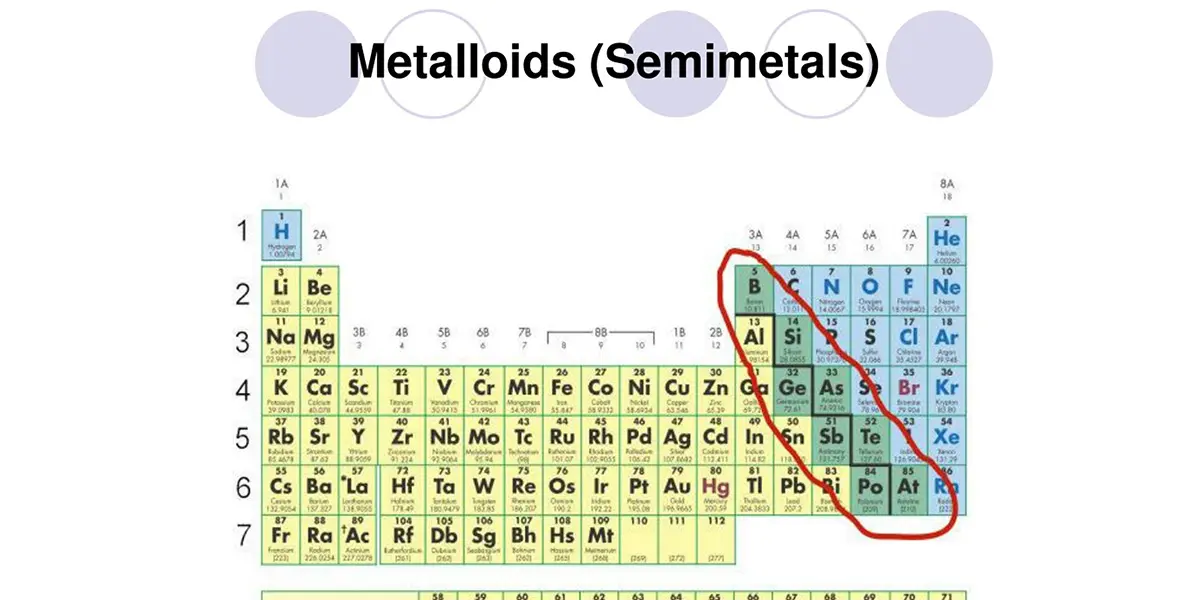
In conclusion, metalloids remain an area of science to be further defined and developed. Each metalloid has a distinct history and finds application in various fields.
The discovery and extraction of these elements may seem simple, but they condense the progress of science and the thickness of history.
My workpieces are related to metalloids!
You can contact XMAKE! As a leading digital manufacturing platform, whether your project involves boron, silicon, antimony, tellurium, or else(forget polonium and astatine), we can handle them in manufacturing.
FAQS
Q1: What are the physical properties of metalloids?
A: The physical properties of metalloids include being brittle, having a metallic luster, and typically having a melting point and boiling point that is intermediate between metals and non-metals. For example, metalloids like silicon are used in electronics due to their unique properties.
Q2: How do metalloids behave in chemical reactions?
A: Metalloids exhibit both metallic and non-metallic behavior in chemical reactions. They can form covalent bonds similar to non-metals, while also exhibiting some properties of metals, such as conducting electricity, although not as efficiently as transition metals.
Q3: What applications do metalloids have?
A: Metalloids have various applications, particularly in the electronics industry. For example, silicon is widely used in computer chips and solar cells due to its ability to conduct electricity under certain conditions.
Q4: How do metalloids compare to metals and non-metals?
A: Metalloids exhibit a blend of properties from both metals and non-metals. While they are brittle like non-metals, they can also conduct electricity like metals. This unique blend allows them to bridge the line between metals and nonmetals in the periodic table.
Q5: What is the significance of the line between metals and non-metals in the periodic table?
A: The line between metals and nonmetals in the periodic table helps to categorize elements based on their physical and chemical properties. Metalloids are found along this line, displaying characteristics of both categories, which aids in understanding their behavior and applications.
Q6: Can you provide an example of metalloids and their compounds?
A: An example of a metalloid is arsenic, which can form compounds such as arsenic trioxide. These compounds exhibit unique chemical properties and have applications in various fields, including medicine and agriculture.
References
- What are metalloids? Are metalloids also metals? -Metals Encyclopedia – GoldInvest Spot – GoldInvest.com. (n.d.-b). https://xianhuo.cngold.org/xhzs/c4857227.html
- Metalloids (quasi-metals) – Periodic Table of Elements. (n.d.). http://zhishubiao.com/y203.html


